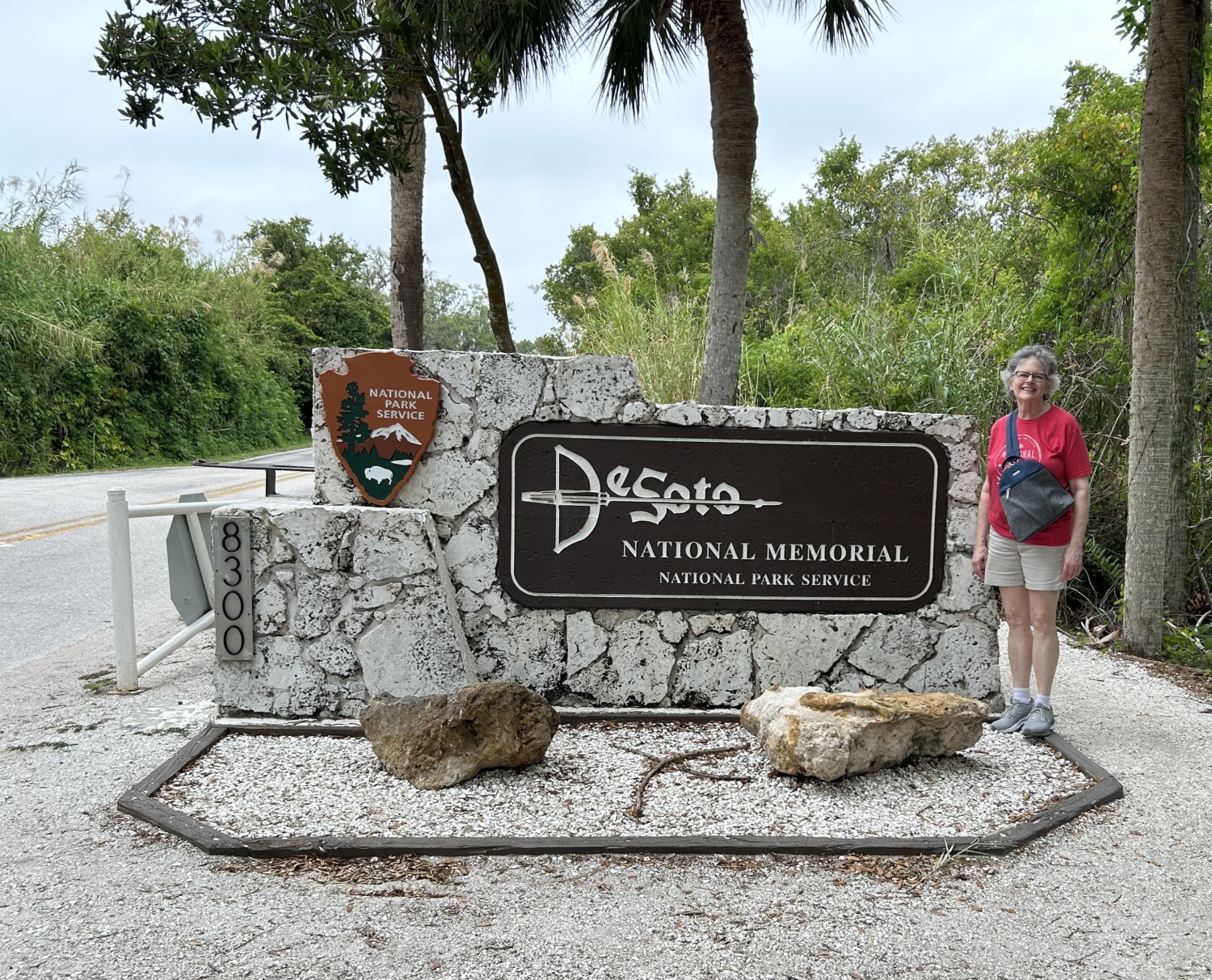Tom and I are one week into our big trip now and our first major stop was De Soto National Memorial in Florida. The first two days were long days spent driving south on I-75, but the third day we got to do some fun stuff.
De Soto National Memorial is a small National Historic Site located on 20 acres a few miles west of Bradenton, Florida. The park commemorates the 1539 landing of the Spaniard, Hernando De Soto and his 600 adventurers. Although the park is small, they are doing their best to tell the story of the De Soto expedition’s exploration of the south and the lives of the Native Americans they encountered.

In May 1539, Hernando de Soto and an army of over 600 soldiers landed in the Tampa Bay area. They arrived in nine ships laden with supplies: two hundred and twenty horses, a herd of pigs, war dogs, cannon, matchlock muskets, armor, tools, and rations. They were executing the order of King Charles V to sail to La Florida and “conquer, populate, and pacify” the land.

The expedition did not yield the gold and treasure these men sought. Instead, they marched from one village to the next, taking food and enslaving the native people to use as guides and porters. Hundreds of people died on this calamitous four-year, 4,000-mile journey, including De Soto. The Spanish killed any native people who resisted them, enslaving hundreds of others. The expedition wandered through the areas now known as Florida, Georgia, South Carolina, Tennessee, Alabama, Mississippi, Louisiana, Arkansas, and Texas. Only 300 of the men survived.

The de Soto expedition changed the face of the American Southeast and caused Spain to reevaluate their role in the New World. It was the first-hand accounts of survivors, describing the native cultures and the richness of the land, which became the journey’s enduring legacy.

De Soto National Memorial was authorized by Congress on March 11, 1948. When the National Historic Preservation Act was signed into law on October 15, 1966, the memorial was included on the National Register of Historic Places. The mission of the De Soto National Memorial is to preserve the controversial story of this exploration and interpret its significance in American history.

Tom and I started the visit by getting the stamp and talking to the two rangers present. We especially wanted to meet the Volunteer Coordinator, Ranger Marielle, because we might want to volunteer at De Soto someday. Ranger Marielle just got back from black powder training where she worked with Brian Reedy, the Chief of Interpretation at Fort Necessity. Ranger Dan also worked with Ranger Phil from Fort Frederica. The National Park Service is like a very large family – everyone is related to someone else.

After talking with them a bit, Tom and I checked out the Visitors Center and watched the movie. Turns out Ranger Denise, another ranger from Fort Frederica, helped develop the movie. It was a very good historical representation of the De Soto expedition and helped us learn about the expedition. The museum in the Visitors Center is very small, but De Soto National Memorial relies on living history to help tell its story.

We looked at the living history area, Camp Uzita, and walked the one-mile interpretive trail. The trail was very interesting with an abandoned boat on the shore and two large monuments. Eighty percent of the park is mangrove swamp. Seeing the swamp made us wonder what the men on the expedition thought when they made landfall. “You want us to walk through that?”
There wasn’t any living history going on the day we visited (a Wednesday). Living history takes place Thursday through Sunday from December through April. The living history season ends with a commemoration of the landing in April.
Although it didn’t take long to explore the park, Tom and I found it very interesting. Even more so because it is located at the tip of a peninsula in a very urban area. We drove through downtown Bradenton and past lots of restaurants and stores on our way out to the park.
De Soto National Monument is free and is an interesting piece of American history. A nice change from all the British stuff we usually learn.


